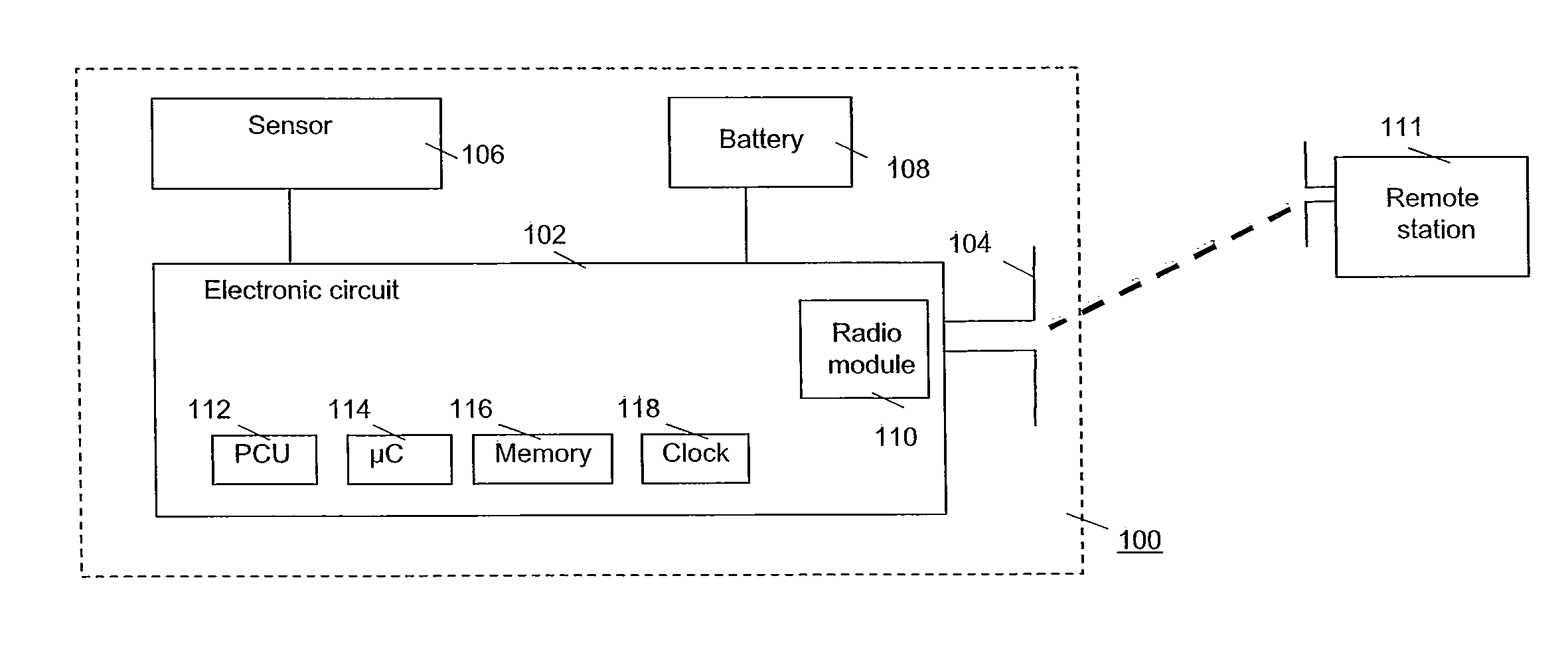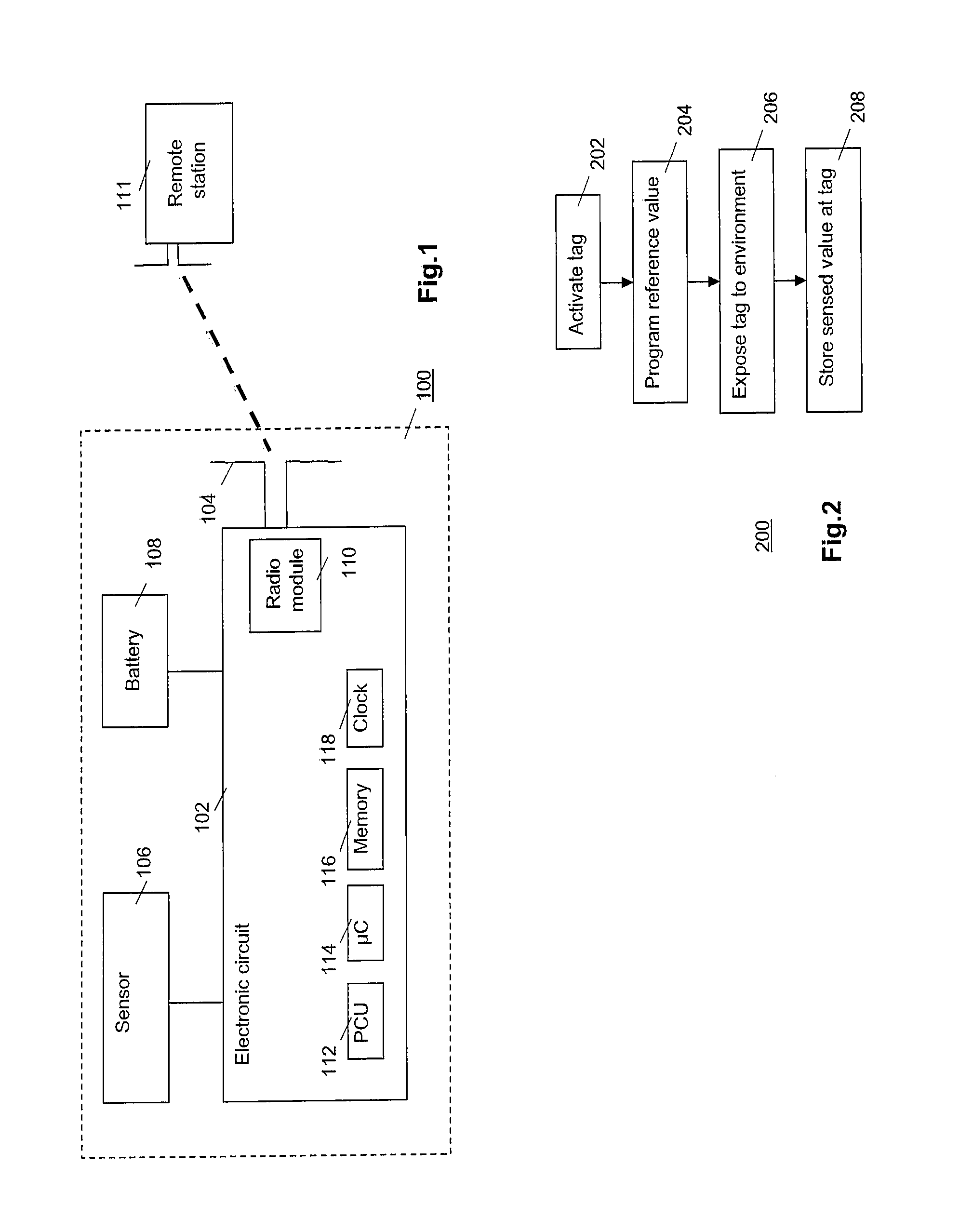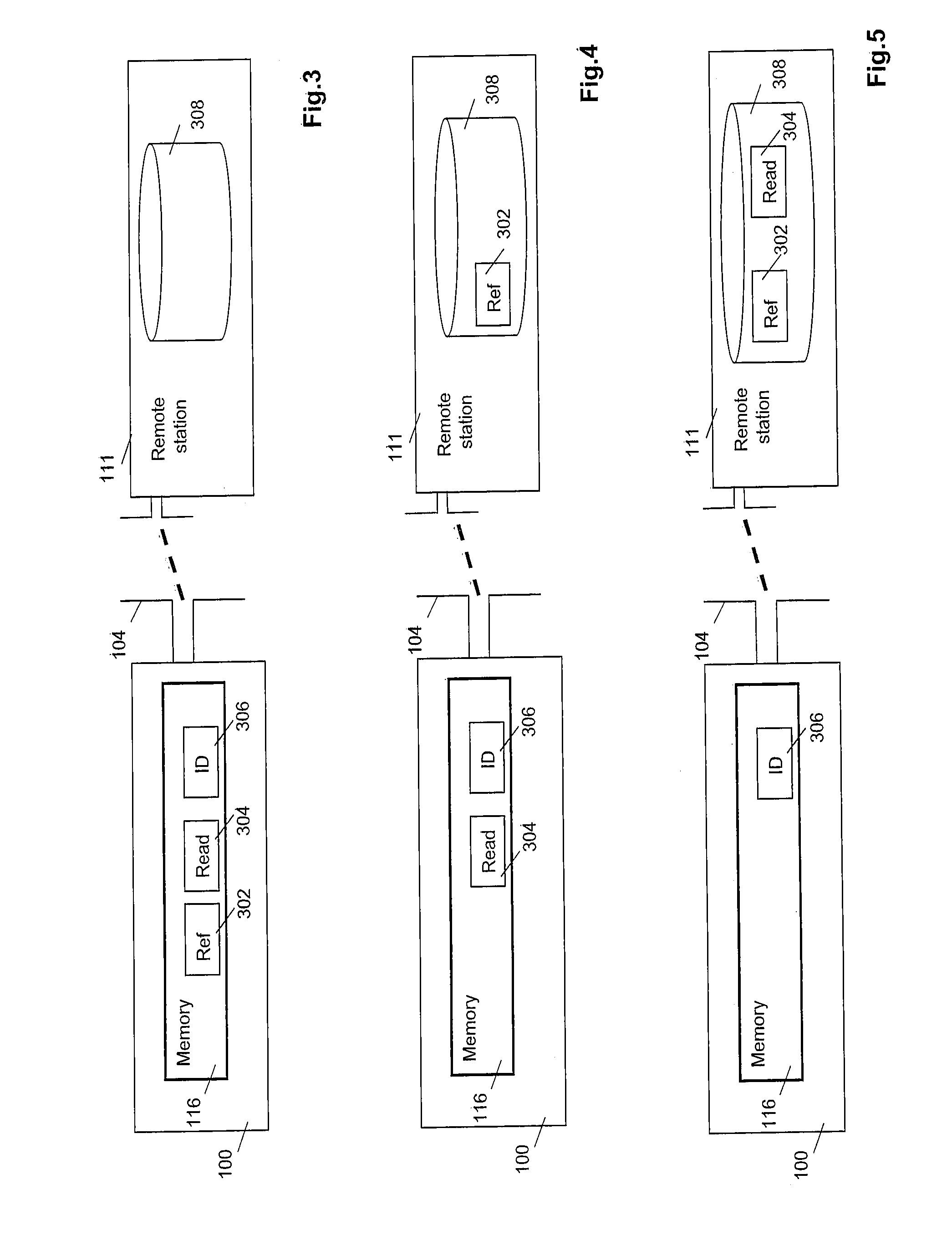Sensor calibration in an RFID tag
a technology of sensor calibration and rfid tag, which is applied in the direction of instruments, heat measurement, liquid/fluent solid measurement, etc., can solve the problems of time-consuming and special equipment for calibration processes, insignificant absolute accuracy, and related costs, and achieve the effect of reducing or even eliminating these calibration costs
- Summary
- Abstract
- Description
- Claims
- Application Information
AI Technical Summary
Benefits of technology
Problems solved by technology
Method used
Image
Examples
Embodiment Construction
[0029]FIG. 1 is a diagram of the main components of a transponder device 100, for example, an active RFID tag. Tag 100 comprises an electronic circuit 102, and antenna 104, a sensor 106 and a power supply 108 such as a battery. Tag 100 is drawn as composed of separate components for clarity. It is understood that the components may be physically integrated with one another, e.g., sensor 106 and / or battery 108 may also be physically integrated with electronic circuit 102 into the same die. Circuit 102 includes a radio module 110 for sending data to, and / or receiving data from, a remote reading / programming station 111, a power control unit (PCU) 112, a microprocessor or microcontroller 114, a memory 116 and an optional clock 118, e.g., an LC-circuit or a quartz crystal oscillator. Preferably, station 111 communicates with device 100 using a wireless connection, e.g., using a radio-frequency communication technology. The configuration and operation of tag 100 is well known in the art a...
PUM
 Login to View More
Login to View More Abstract
Description
Claims
Application Information
 Login to View More
Login to View More - R&D
- Intellectual Property
- Life Sciences
- Materials
- Tech Scout
- Unparalleled Data Quality
- Higher Quality Content
- 60% Fewer Hallucinations
Browse by: Latest US Patents, China's latest patents, Technical Efficacy Thesaurus, Application Domain, Technology Topic, Popular Technical Reports.
© 2025 PatSnap. All rights reserved.Legal|Privacy policy|Modern Slavery Act Transparency Statement|Sitemap|About US| Contact US: help@patsnap.com



